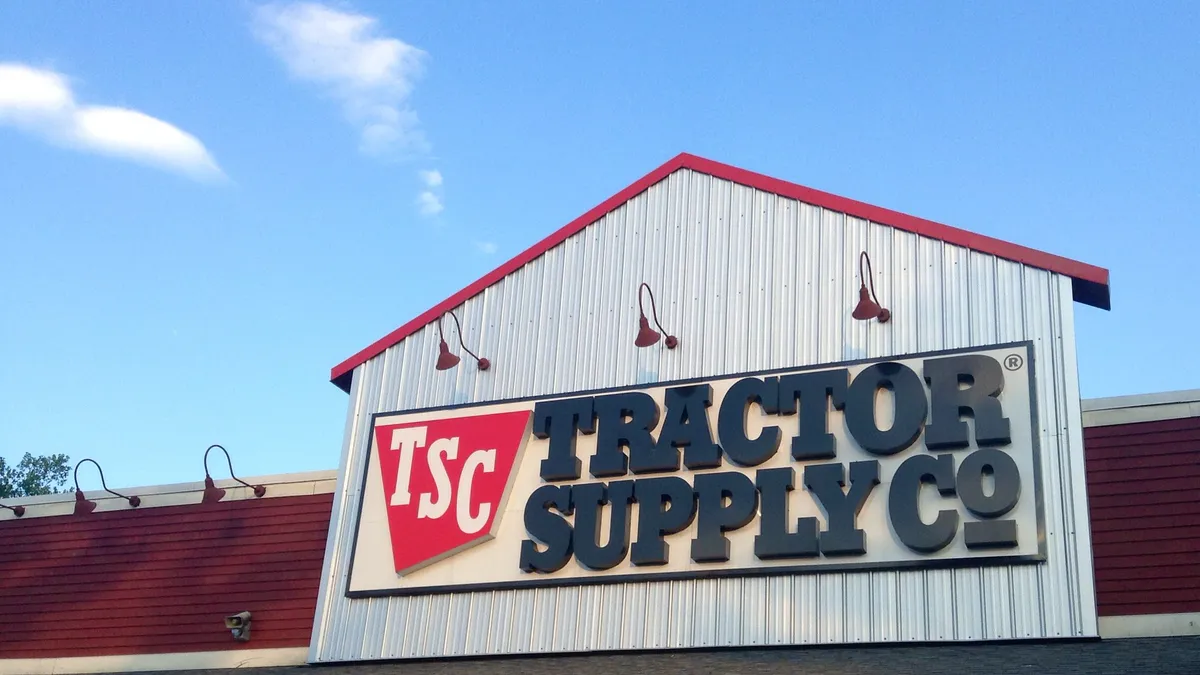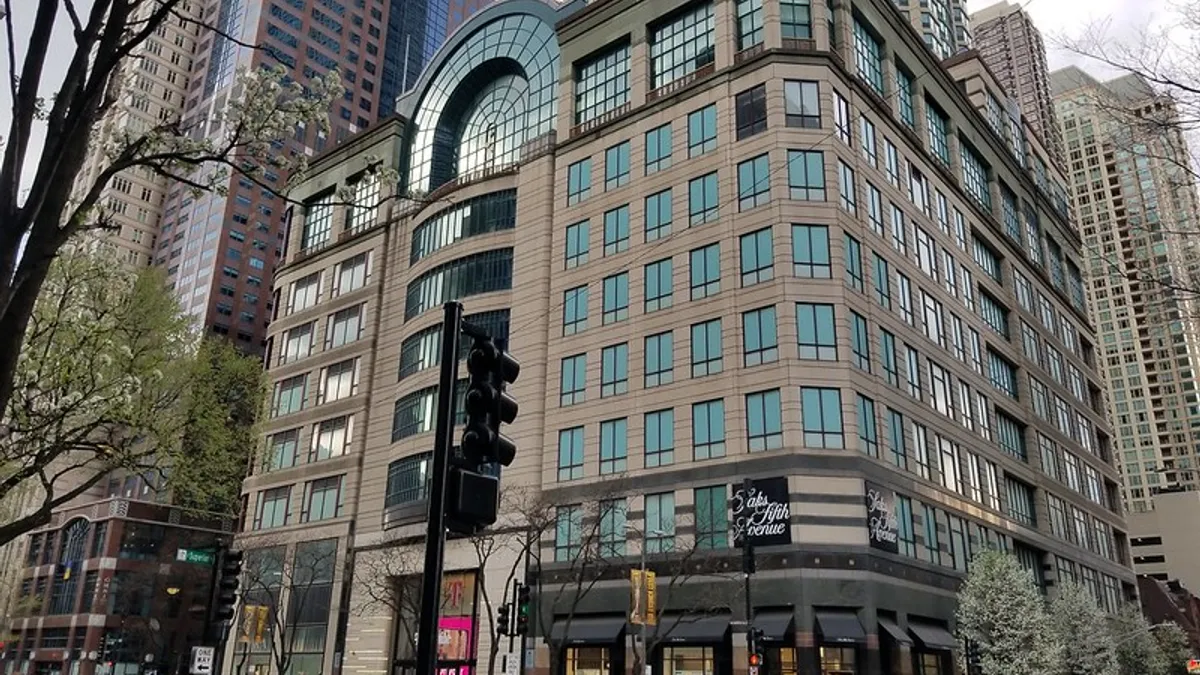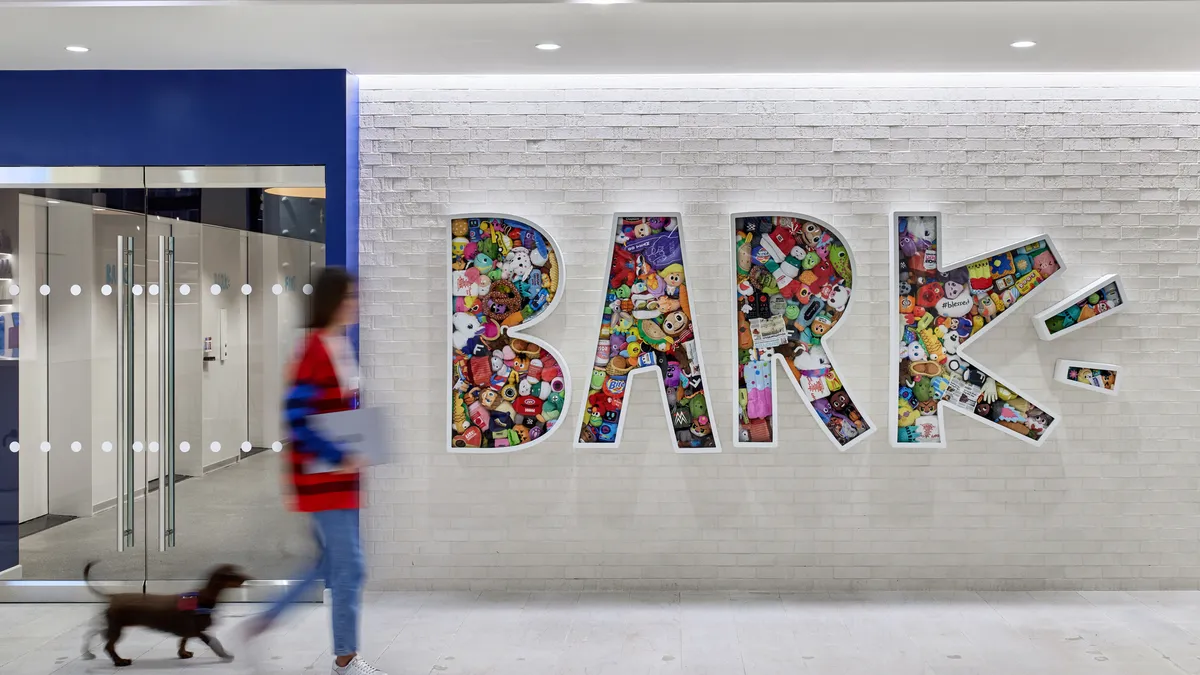Last year Toys R Us faced arguably the most important holiday season of its life. The holidays are perennially a crucial time for the retailer, accounting for nearly half its revenue, but with its ill-timed bankruptcy just ahead of the season the company needed the cash more than ever. And it needed the affirmation that it had a viable future as the last remaining national toy seller.
It needed a win, in other words. But, by several accounts, its sales fell dramatically during the quarter.
Now, after already announcing 180 stores were slated to shutter, the company could close another 200, according to a Wednesday Wall Street Journal report. Taken with the announced store liquidations, the closures could represent nearly 45% of Toys R Us' domestic footprint. The Journal also reported that Toys R Us could lay off a "significant portion" of its corporate staff.
While Toys R Us did not confirm the report, the company has left open the possibility of closing more stores than the initially announced 180 units by a unique agreement with its landlords. Analysts Retail Dive spoke with said more closures were entirely possible, if not expected, and current and former employees have told Retail Dive that they expected more closures as well.
More ominously, CNBC reported that the company was at risk of breaching a covenant on its bankruptcy loan — a crucial piece of financing aimed at keeping the retailer in business as it reorganizes and restructures in the Chapter 11 process. A breach could raise the possibility that Toys R Us will be forced out of business entirely.
Toys R Us is "currently in compliance" with its loan terms and could find financing elsewhere to meet cash requirements or renegotiate the terms to meet the loan's covenants, according to CNBC. If it can't and breaches the loan terms, the retailer's lenders could demand immediate payment, which "could in turn force the retailer into liquidation," CNBC reported.
Toys R Us did not immediately respond to a request for comment on this story. A spokesperson told USA Today that "[w]e have not breached any covenants" and that the CNBC story contained much "speculation."
But even without the specter of forced liquidation, Toys R Us faces an ongoing, yet mounting, challenge. After years of underinvestment, the toy retailer has a long way to go to close the gap with rivals and successfully reposition itself. The misfires over the holidays are one more sign that the retailer still doesn't have the ability or wherewithal to fix its retail problems.
"Operational missteps"
In a letter to customers, Toys R Us CEO Dave Brandon in late January acknowledged "operational missteps" during the holiday season.
"We want to make it easier for you to shop with us, whether online or in our stores," Brandon wrote. "This past season, we were successful in accomplishing this objective for millions of customers. However, there were also far too many transactions where this wasn't the case — due to our operational missteps."
Just what those missteps Brandon alluded to last month were, the executive left up to the imagination. Clues can be found in the company's own social media accounts. In the weeks leading up to perhaps the most important holiday in the retailer's existence, social media showed Toys R Us no mercy.
"DO NOT BUY FROM TOYS R US! Stay away from this horrendous company!" wrote one customer on Toys R Us' Facebook page on Dec. 19, in response to an innocuous company post promoting a WWF-themed bike. "It is not worth any of the stress they will bring! I ordered items on [Nov. 24] and one item never showed."
"Do not order your kids [sic] presents from [Toys R Us]," wrote another customer. "They are a nightmare. I ordered a month ago, the money was taken out of my account and I just found out the items 'were out of stock' which is clearly not true because the items are still in stock but the money was never put back into my account."
These posts are just a couple examples among dozens, of online orders that were shipped weeks later than expected or were, in many cases, canceled after the transaction had already been processed. The retailer typically responded to posts with publicly visible offers to fix the reported issue and requests that complainants contact the company via private message.
The fulfillment issues are an old pattern for the retailer, which has for years under invested in the technological infrastructure to support omnichannel efforts, according to current and former employees who spoke with Retail Dive.
Outdated IT
To be sure, all retailers have trouble spots, and online complaints are famously biased toward the extremes of customer experience, often negative. Brandon's letter, though, hinted at widespread problems in the company's omnichannel efforts, which it recognizes as key to its survival as Amazon, Target and Walmart continue to steal market share in toys.
The servers and underlying infrastructure that Toys R Us uses to fulfill orders have long suffered glitches, according to current and former employees who spoke with Retail Dive. The toy retailer's consumer-facing website in part draws from store inventories to notify customers of stock availability, but very often those numbers are not up-to-date, causing the website to show stock that isn't actually available, employees said. Resolving that issue, moreover, can eat up time, as the system goes store by store to fulfill the item, only to find that each store, in turn, doesn't have the item its computers showed initially.
"This past season, we were successful in accomplishing this objective for millions of customers. However, there were also far too many transactions where this wasn't the case — due to our operational missteps."

Dave Brandon
Toys R Us CEO
One high-level employee, who was with the company at the time, told Retail Dive that the server suffered deleterious outages across the company the crucial week of Black Friday and Cyber Monday. The employee said that he knew of 6,000 orders that "the system couldn't physically process" during Cyber Week.
The fulfillment issues have long been a problem for Toys R Us, calling into question whether the company's underlying IT infrastructure was ready for the omnichannel push the company made with a website re-launch and marketing ahead of the holiday season, according to the employees who spoke with Retail Dive.
Holiday sales plunge
Those weren't Toys R Us' only problems during the holiday season, either. As Retail Dive reported previously, the company's pricing strategies were outdated, according to some experts, with online prices were tracking higher on key items than Amazon and other competitors.
Taken together, the "operational missteps" — which, without naming them, Brandon said his company was working to fix — appear to have made for a dismal holiday season for Toys R Us. The company in January released its holiday sales report confidentially, disclosing results only to some lenders and other stakeholders, breaking from more than a decade of tradition of making the figures public.
Several accounts, though, paint a bleak picture of the holiday season (where it historically has generated 40% of revenue, according to a September court filing from Brandon). Northjersey.com reported in January that employees at the retailer's Wayne, New Jersey-based headquarters were told that Toys R Us ended 2017 with sales down 9% year-over-year, and with online sales down 20%.
Philip Emma, a Debtwire retail analyst, used court filings and certain financial assumptions to estimate Toys R Us' North American net sales fell more than 10% in the fourth quarter, and gross margin was down more than 30%, according to a report emailed to Retail Dive.
Moreover, internal figures provided to Retail Dive and confirmed by a high-level employee showed that fourth quarter sales, as of early January, were down more than 12% in both the Toys R Us and Babies R Us units.
'No guarantee' on store footprint
All of which leads to a multibillion dollar question: Now what?
Brandon and Toys R Us' bankruptcy attorneys have made it clear that the company is determined to emerge from Chapter 11 as a going concern and better positioned for the new retail world. But the company's long-standing competitive disadvantages show no signs of abating, even after it unveiled an ambitious rebranding effort ahead of the holiday season.
In the early weeks and months of Toys R Us' bankruptcy, the retailer was focused mainly on securing inventory, calming its suppliers and customers, and hiring consultants to help it navigate reorganization.
"First and foremost, they had to focus on supplies," Keith Owens, a bankruptcy attorney with Venable, said in an interview. "They had to make sure the supply line was not disrupted, make sure leases were not terminated. The biggest push in the first several months was that and getting through the holiday season."
Unlike Payless, Gymboree, rue21, True Religion and others that filed in 2017, Toys R Us entered Chapter 11 in free-fall, without a clear path through and out of bankruptcy. That meant Toys R Us has figured out major issues — like how many stores to close — along the way.
After much speculation and waiting, the retailer announced in January plans to close around 180 stores — representing about 20% of Toys R Us' domestic footprint and some 6.9 million square feet in retail space — through April. An "overwhelming majority" of those stores had negative sales trends and failed to meet performance standards set by the company, according to Toys R Us. At the time, the retailer indicated in a court filing it might not close the entire number, depending on whether it could negotiate rent reductions on those stores.
The company also left room to close more stores in bankruptcy "in order to maximize the value" of Toys R Us' assets. Indeed, the initial wave of closures may have been just the beginning.
Earlier this year, Toys R Us worked out an agreement with its landlords to extend the time in bankruptcy the company has to exit leases (which is ultimately capped by law at 210 days, unless such an arrangement can be worked out with stakeholders).
"There is no guarantee that Toys will not look to close more stores in the future."

Joshua Friedman
Legal analyst, Debtwire
Under the extension, Toys R Us can keep closing more stores through the end of August and then again in January 2019. Owens described the deal as a "pretty creative and practical solution" that allows Toys R Us more time to review its portfolio and make critical decisions during the Chapter 11 window. Joshua Friedman, a legal analyst with Debtwire, described Toys R Us' initial store closures earlier in February as "a fairly limited initial list for a retailer as large as Toys" and added, "However, there is no guarantee that Toys will not look to close more stores in the future."
The timing on the closures might not be ideal for raising cash. The months that preceded Toys R Us' store closure announcement, after all, are the biggest toy-buying months of the year. Liquidating millions of feet in toy inventory in the post-holiday months could mean Toys R Us has to eventually sell its stock at even lower prices to clear store inventories.
But the alternative, would likely have been worse, Debtwire's Emma points out. "If you're liquidating through the holidays, you're probably not going to make your vendors very happy" by selling toys at heavily discounted prices, he said. He added close-out sales are "not necessarily to liquidate at gross profit level" but rather "what you owe on your ABL [asset-backed loan]." Creditors lending against inventory, as Emma pointed out, typically offer less than 100% of a retailer's estimated inventory value.
A boon for rivals
As Toys R us closes as many as 380 stores, potentially, others stand to benefit.
In late 2017, analysts with UBS led by Michael Lasser wrote that sales lost through Toys R Us closures could move online, which could help Walmart and Target. Moreover, the analyst also noted that 93% of Toys R Us stores that were located near each other were also within 15 minutes of a Target, which has added 1,400 new and exclusive toys as it tries to beef up in the category. UBS estimated Target stores could capture 25% of the sales lost from initial Toys R Us closures. Walmart could benefit, too, the analysts wrote, but the impact would be smaller for the retail giant given Walmart's larger sales base.
Amazon, too, could benefit from the Toys R Us bankruptcy, noted analysts. Moreover, there are other games in town besides the mass merchants: Macy's, J.C. Penney, Hudson's Bay and Kohl's have all expanded their toy offerings.
Is Chapter 11 a new beginning, or the end?
The matter of store closures is just one of several questions hanging over the company's bankruptcy.
Who will own Toys R Us when the Chapter 11 dust settles? How much debt will be left on its books? How will the retailer compete with the mass merchants and other toy sellers going forward? And will the company even survive Chapter 11 as a going concern?
Brandon, the company's marketing team and its attorneys have frequently referred to the retailer's importance as a "toy showroom" and the need to make the in-store experience more appealing — a truism Brandon and others have invoked for years. To that end, last fall, Toys R Us started piloting play "labs" to give kids a place to test toys. Yet as Toys R Us might have learned from its experience with former unit FAO Schwarz, a rich store experience does not necessarily translate into sales or financial health.
Brandon also indicated in his letter that the company plans to build "a number of" combined Toys R Us and Babies R Us stores (though two former employees who spoke with Retail Dive said these have not been successful). Aside from that, there has been little communication publicly or to employees of any major strategy changes at Toys R Us, based on accounts we've heard .
As it winds through bankruptcy, Toys R Us has yet to preview a reorganization plan or signal what such a plan might look like.
"Toys has been in bankruptcy for over four months now and still has not formulated a plan of reorganization," Friedman said. "This could be a sign that the company is finding it hard to reach creditor consensus and might be unable to avoid liquidation."
"Nonetheless, it would be surprising if the company doesn't attempt to proceed in the near- to mid-term with a plan to restructure its debt obligations," he added.
The lack of strategy guidance or bankruptcy plans has heightened tension within the company for some, with rumors and speculation circulating among some employees that the company could liquidate, as its fellow big box retailer Sports Authority did in 2016. At the same time, several store- and district-level employees we spoke with expressed hope for the company's future and faith in its management
But now there are reports breaking that the company could indeed be forced to liquidate if it breaches the terms of its debtor-in-possession loan. History favors liquidation among retailers in bankruptcy. Both Fitch Ratings and AlixPartners have found that liquidation is the most common outcome of retail bankruptcies.
"Bankruptcy liquidations of retailers are fairly common and often accrue to the benefit of secured creditors and the liquidators conducting them," Friedman said. "While it appears unlikely, if Toys elects to liquidate in Chapter 11, it would seek court approval to conduct going-out-of-business sales and reject leases at the stores that will be closing."
In Toys R Us' corner, by their own accounts, are the retailer's suppliers, namely the big toy makers. The toy companies could well fare worse in a market controlled by Walmart, Target and Amazon, the latter of which grew its toy business 12% year-over-year in 2017, to $4.5 billion, according to One Click Retail. "In most cases, suppliers want to do business with a reorganized entity," Owens said.
"In most cases, suppliers want to do business with a reorganized entity."

Keith Owens
Bankruptcy attorney, Venable
Hasbro CEO Brian Holdner said in a Feb. 7 conference call that his company "continue[s] to partner with Toys R Us to support their turnaround," according to a Seeking Alpha transcript. And yet he also indicated the toy maker would be "right-sizing" its business with Toys R Us and turning to its own omnichannel platform. In other words, the toy maker is working on a contingency.
Even if Toys R Us successfully restructures in bankruptcy, with a smaller footprint and getting some much-needed debt relief, the retailer still faces the same fundamental challenges it did before.






















